André Leon Talley – renowned fashion editor, prince of excess – has taken a fair few luxury holidays in his time. First-class flights to Biarritz, private jets, shopping trips to Florence by Concorde. But sometimes he keeps it simple and spends a quiet weekend with his friend Manolo Blahnik, the shoe designer, in the English city of Bath, “at his residence on the Crescent”.
"Manolo will be in the kitchen, cooking his wonderful cuisine, and I'll be in the larder, lacquering my Louis Vuitton cases with yacht varnish, bringing them to a high shine," he tells me.
Wait, did he say “yacht varnish”?
Talley was always the first to grab everyone's attention, whatever room he was in. How could he not? He was a 6ft 7in African American in a sweeping kaftan, surrounded by thin white women in cocktail dresses
“Yes, yacht. Y-A-C-H-T. It’s nothing esoteric. I was inspired by Mrs Vreeland, who told me her suitcases were lacquered in yacht varnish,” he says, referring to the late Diana Vreeland, a former editor of US Vogue and Talley’s first mentor.
Talley has more than 50 pieces of Vuitton hand luggage, currently residing unused in his second home in North Carolina, “because there’s no one at the airports to carry them now”. So he gets through a lot of lacquer, in pursuit of “this refined, dandy lifestyle: it’s not about glamour – it’s self-respect, a standard”. Nor is it about snobbery: “I may have had moments of hauteur. H-A-U-T-E-U-R. But I was never a snob. You can ask [Princess] Gloria von Thurn und Taxis, or [Lady] Amanda Harlech!”
The fashion shows are never short of over-the-top characters, but Talley was always the first to grab everyone's attention, whatever room he was in. How could he not? He was a 2m – 6ft 7in – African American in a sweeping kaftan, surrounded by thin white women in cocktail dresses. Next to him would be the thinnest of all, Anna Wintour, his boss at American Vogue.
Talley was her creative director and, later, editor-at-large, and it was said he was the only person who could tell Wintour if she looked bad in a dress. ("I would never be so rude as to say, 'You look bad,'" Talley corrects me. "I would say, 'Oh, who made that?' and my eyebrows would raise to the ceiling, and there would be a silence.") While other fashion journalists tend to speak in a tone of elegant boredom, Talley's voice rang out at every show and party, swinging between a boom and a shriek.
Many people who work in fashion come from a relatively privileged background. When I was 21 I was offered a job at US Vogue, and when I baulked at the low salary I was told, “Most people who work at Vogue have a private income.” Talley did not. Raised by his grandmother, a maid, in Durham, North Carolina, under Jim Crow laws, he could barely afford food when he started as a journalist. For decades he was the only black person on the front row, joined later by the great fashion illustrator and Vanity Fair’s style director Michael Roberts, and the Washington Post’s Robin Givhan, the only fashion writer ever to win a Pulitzer. This gives you an idea of just how talented a person of colour has to be to break into this still extremely white world.
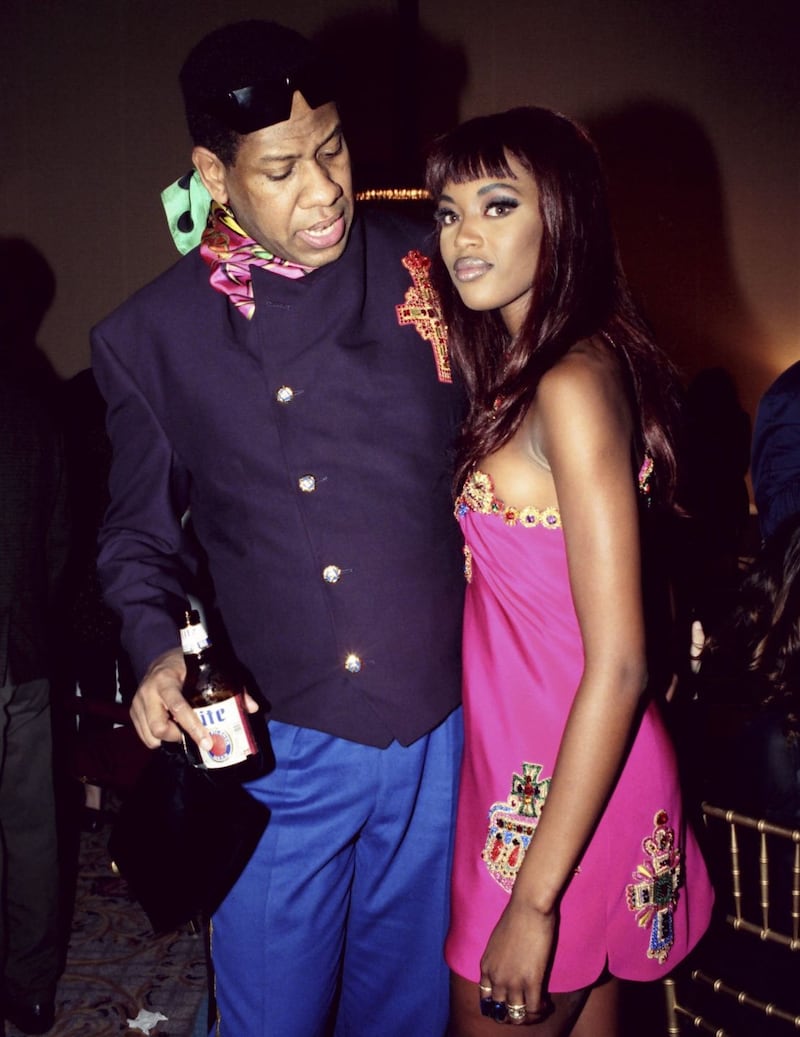
During his four decades at the magazine publishing house Condé Nast, Talley wrote landmark features (including Michelle Obama's Vogue interview after becoming first lady) and oversaw some of its most extraordinary shoots, including Naomi Campbell as Scarlett O'Hara for Vanity Fair, inverting Gone with the Wind's racial dynamics. His profiles could be overly chummy – he often interviewed friends – but they were soaked in his outsized personality, and his shoots were joyful. For a long time he was the most powerful black man in fashion, now overtaken only by Edward Enninful, editor of British Vogue. When Enninful got that job, he wrote to Talley to tell him: "You paved the way."
Or, as Talley puts it: “I scorched the earth with my talent and I let my light shine.” Now he has written a memoir that blows it all up, like a glorious firecracker shooting into the sky.
TALLEY IS TALKING on the phone "from my library/kitchen/laundry room" in his home in a New York suburb. He has a courtly way of speaking, mixing southern good manners with faintly European pronunciations; friends are always referred to as if he were introducing them to an ambassador at a party: "Annette de la Renta and Oscar de la Renta, very close and dear friends of mine" and "the late Lee Radziwill, the sister of Jackie Kennedy, who was one of my greatest friends in my life, and it was not a known fact we were that close".
“The first thing I want to say about my book is this,” he begins. “This work, my epistle, is about not only my contribution to the world, but how did my presence change that world? And how was my work regarded and disregarded by Anna Wintour? I am 71 years old and I take my story with me wherever I go. The past is always in the present.”
I read his new memoir, The Chiffon Trenches, in one hot weekend, barely able to put it down. The writing is deliciously good, and, as a narrator, Talley is both incisive and dizzyingly unreliable, which adds to the fun. A previous memoir, ALT, published in 2003, often felt hamstrung by professional loyalties: "I had to bite my tongue about certain people, for fear of reprisals," he writes. There is no tongue-biting here. "This is not a bitchy tell-all," he says, although some may disagree. Karl Lagerfeld, who died last year, was Talley's close friend for 40 years and showered him with gifts, including $50,000 for his 50th birthday, because that's how dandies roll. But in the book he is depicted as brilliant yet monstrous, capriciously dropping close friends for no reason (including, you won't be surprised to learn, Talley).
“I would never have talked about this while Karl was alive, out of respect for him and fear of his reprisals,” he says.
What would Lagerfeld have done? “He could have decimated my reputation in fashion.” So, instead, Talley has decimated his.

Prepublication coverage of the book has focused on Talley’s very personal attack on Wintour, whom he says has inflicted “huge emotional scarring” on many (including, you again won’t be surprised to learn, Talley) and – worse! – “was never really passionate about clothes”, caring only about power. Wintour, more than anyone in the world, can still make or destroy a designer’s career. She is also a celebrity, recognisable to even the most fashionphobic. Surely Talley anticipated the fuss he would cause.
“I did not anticipate that at all! One of my editors said to me, ‘Do you think Anna Wintour will talk to you after this comes out?’ I said, ‘Yes, of course! Why not?’”
Maybe because you write that she is not capable of “simple human kindness”?
There is the briefest of pauses. “Well, there’s always hope!” he says.
Talley and Wintour fell out in 2018, after he discovered he was no longer doing the red-carpet interviews at the annual Met Gala, or those for Vogue’s podcast. He was replaced at the Met Gala by Liza Koshy, a young YouTube star. “What could this talented YouTuber offer? Surely she didn’t know what a martingale back is to a Balenciaga one-seamed coat,” Talley writes.
Talley is very funny about the unspoken rules of working with Anna Wintour: no meeting must last more than eight minutes; food is not an essential part of lunch
He believes he was dropped because “I had suddenly become too old, too overweight and too uncool”. Yet other Vogue staffers of his generation – the stylist Grace Coddington, the writer Hamish Bowles – have resisted dodo status by embracing social media and other shifts in the weather. Talley is on Instagram, but his page largely consists of references to the past: photos of Radziwill, Vreeland, Princess Gloria. The Vogue of the 1980s, 1990s and early 2000s that he describes in his book, when editors expensed their dry cleaning, is like reading about the last days of the Raj. But you don’t get to be the longest-serving editor of Vogue without knowing when something is passe, and Wintour is ruthless: “So much of it has to do with… having talent that’s right for the moment,” she said in an interview last year, referring to the way she casts her staff.
But Talley says he had accepted the world was changing: “If Anna had called and said, ‘André, we’re thinking of going in a different direction [for the Met ball], it’s important for our brand,’ I would have said, ‘Fine. That’s great.’ And I’d have come in my Tom Ford cape – I always wear Tom Ford – and enjoyed my dinner.” But she didn’t; his former confidante had moved on, and, he writes, he never “felt the love” from her.
The estrangement was a shock because the pair had been allies since they first met at Vogue, in 1983. When she was appointed editor, in 1987, Wintour made Talley creative director. He is very funny about the unspoken rules of working with her: no meeting must last more than eight minutes; food is not an essential part of lunch. Once they took a taxi to a restaurant, ordered their meals, and after 20 minutes Wintour announced they were leaving, before the first courses had come out.
“Food is not important to her, so I learned to deal with that,” Talley says. (I can vouch for this: I was once summoned to a “breakfast meeting” with Wintour at the Ritz in London. It lasted precisely 25 minutes and we didn’t even get to coffee.)
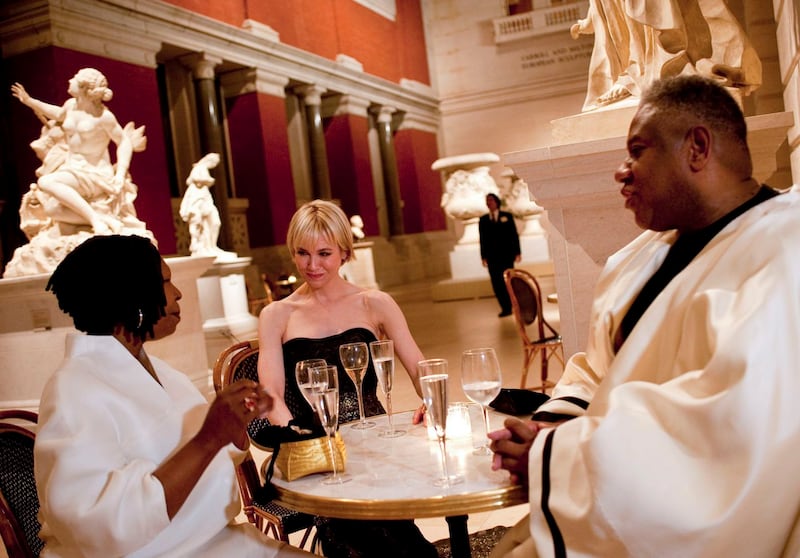
But Talley insists his book is “a love letter to Anna Wintour” – in which case I’d hate to see what counts as hate mail. He has, he says, “been wrapped in neglect”, yet the book often suggests the opposite. Over the years Wintour invited him to her first wedding (and gave him her bouquet); arranged an interest-free loan from Condé Nast, so he could buy his grandmother’s house; hired him back after he briefly left Vogue in the 1990s due to a previous, unexplained falling out; invited him to her children’s weddings.
“Yes, and she did the intervention and Condé Nast paid for that,” he says, referring to the many times Wintour packed him off to a health spa and instructed him to lose weight. (He did, but he then put it straight back on.)
Didn’t he feel bullied when she was constantly telling him he was too fat?
“No! I felt it showed great concern,” he says.
Things reached a head after Talley stormed out of the 2018 Met ball. 'It felt like I was just thrown under the bus. It hurt!' he says
Talley’s weight has been a problem since his grandmother died in 1989, and he binged on foods that reminded him of her. “Beautiful pineapple and coconut cakes, pies, Virginia ham with cloves,” he says, with the same relish as when listing famous friends or describing designer outfits. “I still have that crutch, eating, and it’s an addiction.”
I ask if, in an industry in which the one crime is to be fat, maybe it was also a rebellion against his lunch-averse boss.
“I never thought about that, but I’m sure people were looking at me and thinking, How disgusting! She was always sitting next to me, but I wasn’t deliberately making myself bigger next to these small white women in power,” he says.
Things reached a head after Talley stormed out of the 2018 Met ball. “It felt like I was just thrown under the bus. It hurt!” he says now.
But maybe she thinks he dropped her. He was the one who walked out.
He ponders this, briefly. “Well, if that were the case, she could call me to say, ‘André, what’s wrong?’ That’s what I would expect,” he retorts.

Despite all this, Talley's name still appears on Vogue's masthead, as a contributing editor. "I hope I'm still part of the Vogue family – I haven't been officially told I'm not," he says, horrified at the thought. And he probably is – after all, Wintour gave him the go-ahead to publish this book. She read an early draft and asked only that he remove some private details about her children. She knows being denounced as a she-devil is good for her brand. (She turned up to the premiere of The Devil Wears Prada in, yes, Prada.) While outsiders have long been transfixed by what Talley calls Wintour's "sphinx-like looks", the funniest moments in his book come when we see just how much her staff also bought into the mythology. In perhaps the weirdest scene, Wintour scribbles a thank-you note to Talley and he sends it to his framer so he can treasure it for ever. (Alas, the framer failed to appreciate its significance and chucked it away, much to Talley's fury.)
Isn’t it unusual to frame a casual note from someone you’ve worked with for decades, I ask.
“It was not an original idea! [The US Vogue fashion editor] Tonne Goodman had a letter from Anna framed,” Talley says.
I suddenly feel rather sorry for Wintour, trying to get on with her job but surrounded by people frantically framing every Post-it she discards.
TALLEY'S BOOK TELLS the story of his life, which is often the story of the women who have supported him: his grandmother, Vreeland, Annette de la Renta, Carolina Herrera, Radziwill and, most of all, Wintour.
I tell him it sounds as if he spent his life looking for mother figures; maybe he forgot that Wintour was his boss, not his mother.
“I have always looked for mother and father figures. I had to look up to something to go forward,” he says.
A day later he sends an email to clarify: “My mother figure to this day is my grandmother. She gave me unconditional love and her home, her values, were my arc of safety.”
Talley was raised by his grandmother, Bennie Frances Davis, while his parents worked in a different state. As a child he was bullied by other kids but adored by Bennie, although he says she hugged him only twice in his childhood (“too busy”). Yet she unblinkingly supported this little boy whose idea of a perfect day was to watch Julia Child cook on TV, then wallpaper his room with pages torn from Vogue.
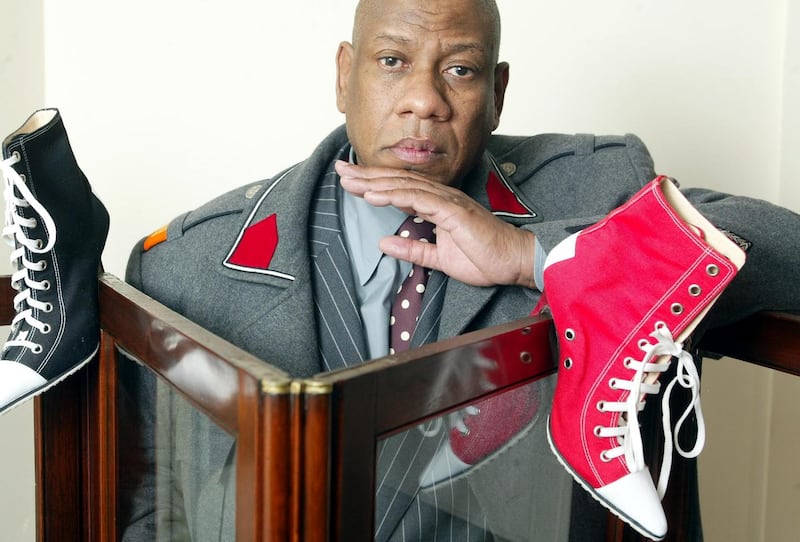
His mother was a different matter: “She never abandoned me, but she didn’t understand me.” She could be cruel and would mock his experiments with fashion, which became analogous with escape.
“Every Sunday I would walk across the railroad tracks into the affluent part of Durham and buy Vogue and Harper’s Bazaar, and go back to my grandmother’s house, read my magazines. I was allowed to retreat from the bullying and the sexual abuse into a beautiful world,” he says.
Talley never told anyone he was sexually abused as a child – not the therapists he has seen, not even his beloved pastor. But he felt, with this book, that it was time to explain himself.
“It began when I was nine years of age, and it was serial. My whole life has been determined by this trauma. I can say this now,” he says.
His first abuser was a man who lived on his street, who would tell him, “This is our secret game.” Later, there were older brothers of friends. He didn’t tell his grandmother because “it wasn’t something that could be discussed at the dinner table. And I was afraid I might be considered the perpetrator and sent away to detention.”
Because of the abuse, Talley says, he has never really had an intimate relationship. In the late 1970s, he writes, he attempted to go to bed with a French journalist: “It was hopeless, useless. This idea of mounting an individual and causing what I had only known as deep discomfort... He gave up and we got dressed.” He has, he says, had romances with men and women as an adult. “But I’ve not had them successfully. I don’t know how to be intimate and in a relationship, and I regret that. It comes from this childhood trauma.”
As a young man in New York he fled from gay bars, horrified at the overt sexuality and preferring instead the chaste fun of dancing with Diana Ross at Studio 54. Instead of looking for sexual connection, he would look for approval from people he admired. And if he felt any emotional lack, he “filled my life with luxury and the pursuit of education”.
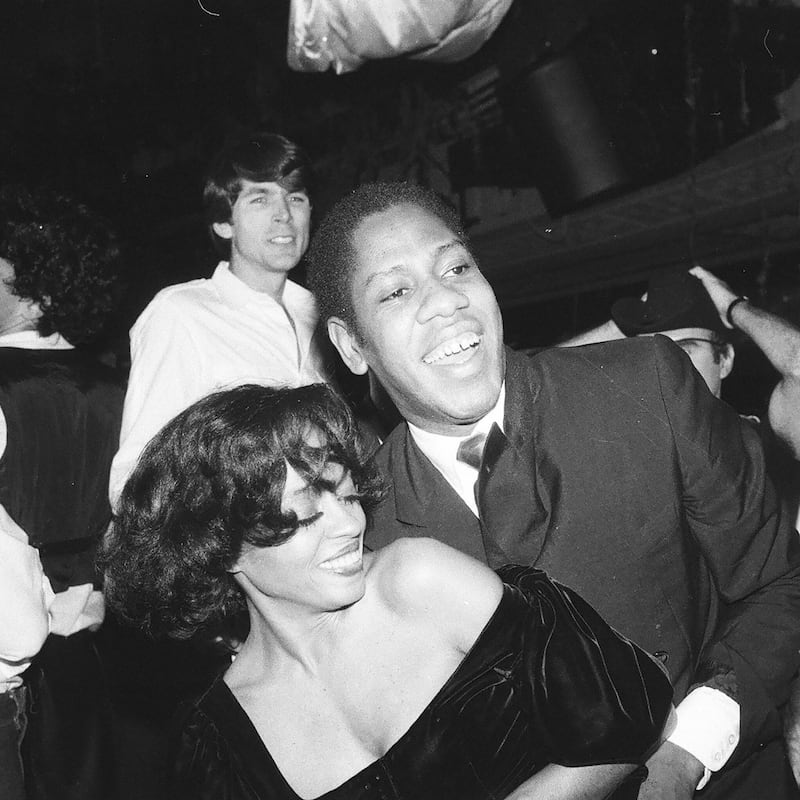
Talley studied at North Carolina Central University, then, on a scholarship to the prestigious Brown University, got a master’s in French literature. He is still rightly proud of this, taking care to mention that he has “better degrees than Anna Wintour”. It was at Brown that he first met people connected to fashion, and after graduating was taken under Vreeland’s wing in New York. From that point it was a dizzying upward rise: working with Andy Warhol at Interview magazine, reporting from Paris for Women’s Wear Daily and then, at last, Vogue.
He felt “at home” in this over-the-top world, where “there were no victims, only high octane egos”. Any insecurities could be hidden beneath another custom-made suit. During his first eight months in Paris, every time he got his weekly pay cheque he marched straight to the Vuitton store and bought another suitcase. Surround yourself with enough beauty and you’ll no longer think about ugliness – that’s the theory, anyway. Talley instantly fell in love with the fashion set, with their clearly defined rules: you go to these nightclubs, talk about those subjects, use this lacquer on your suitcases.
I earned my position not because I was a beautiful, skinny – you can look at the pictures – articulate black man. But because I had done my homework and my degrees
He didn’t think about being a black man in the white world of fashion: “I earned my position not because I was a beautiful, skinny – you can look at the pictures – articulate black man. But because I had done my homework and my degrees. I never thought about being a man of colour in my career until recently.”
Others were more conscious of it. In the book Talley reflects that, in the 1970s, one fashion PR referred to him as Queen Kong. Around the same time a colleague accused him of being what he describes as “a black buck” and sleeping with every designer in Paris, in order to humiliate him out of his job. It worked, and Talley, mortified and furious, returned to New York. These days, he says, he feels a different responsibility as a man of colour: “I’m a descendant of enslaved people, and this is always in my mind. Whatever I articulate must in some way reflect who I am as a black man and what I can impart to the history of fashion, as this black person who was able to be in the front row.”
Since he has taken a step back, he says, his eyes have been opened to who his real friends are. Some – Ford, Herrera – have stayed true. Others have not. “I do think I’ve been dropped by Miuccia Prada. That is a big surprise. I have eight crocodile coats custom-made for me by her, but she has not kept in touch. And that hurts me.”
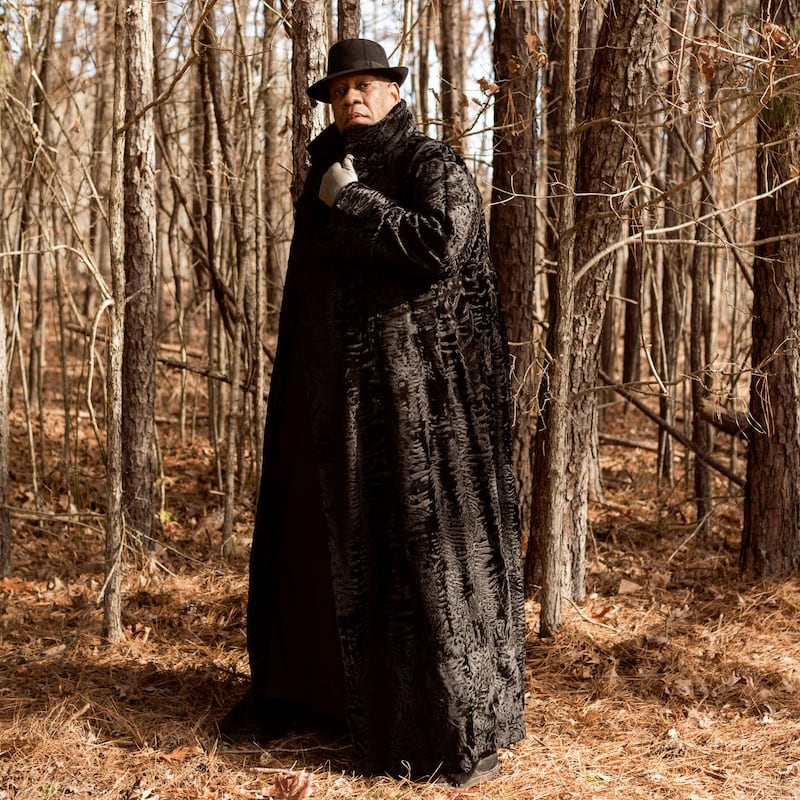
Talley is not the first person to have confused possessions with love, or a career with life. “I don’t need any more stuff; I have too much in my houses,” he says, then lists his favourite stuff, including photographs of himself with Oprah Winfrey, a Warhol silkscreen of Vreeland, “Truman Capote’s sofa”. He couldn’t afford more stuff now anyway; instead of being chauffeured everywhere as he was in his pomp, a friend called Chad gives him lifts to the supermarket.
For Talley, elegance is what he learned from Vreeland and the beloved matriarchs of his past, but fashion is about being heartlessly modern. He says he misses not the status he had in his heyday but, rather, "the human fellowship of being on the front row". But the front row is a powerful signifier of status: being there means you are one of the most important people in fashion, and this kind of validation still matters to him. To show love to his "dear friends", Talley includes them in his list of best-dressed people. Wintour comes in at number one – but only when wearing Chanel haute couture.
My story is a fairy tale of excess, and in every fairy tale there is evil and darkness, but you overcome it with light. I want every person I come across – the stranger on the street, the church member in the pew next to me – to feel love
Talley and I have been talking for two hours, and I would be happy to talk for 10 more. Fashion will be a blander place if it no longer has space for characters like him; the expense accounts will probably be smaller, but it will be a less exciting world. Despite his obsession with luxury and the fashion industry, Talley remains interested in everything. Nonfashion topics we touch on include the career of Barbara Stanwyck, the songs of Nina Simone, Barry Jenkins’s adaptation of James Baldwin’s novel If Beale Street Could Talk, Anne Glenconner’s bestselling memoir, Lady in Waiting. (“Exceptional: I come from the opposite spectrum of the world, but I compare my life to hers, the gilded cage and the reality.”) Does he ever think he would have been happier had he stayed in North Carolina and worked as a teacher, as Vreeland once worried he’d do?
"Never. Never!" he gasps. "My story is a fairy tale of excess, and in every fairy tale there is evil and darkness, but you overcome it with light. I want every person I come across – the stranger on the street, the church member in the pew next to me – to feel love. I have not been privy to love in my life, but I want them to feel that they have received some love from engaging with me, André Leon Talley." – Guardian
The Chiffon Trenches, by André Leon Talley, is published by 4th Estate










